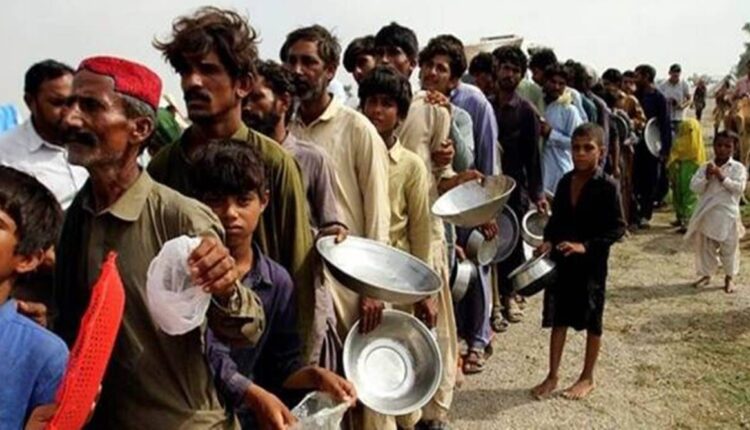
The floods in Pakistan highlight the imminent need for friendlier relations with our neighbour
This story first appeared in The Indian Express
In the aftermath of floods, the absence of climate change as a political agenda is being conspicuously felt. Collective regional-level solutions should be sought and implemented.
We’re in it together. “We”, as in India and Pakistan. Our weather systems like our history are joined at the hip. I remember reading in my Social Studies textbook how monsoon rains, originating in the Bay of Bengal, enter Pakistan through the foothills of the Himalaya. Today, as Pakistan experiences the worst floods (adjectives like cataclysmic and catastrophic have fallen flat given the scale of destruction) in its 75-year-old history, climate experts tell us that this time the monsoon has changed its centuries-old pattern. This year, it entered the Southern part of Pakistan — Sindh and Balochistan — directly from Rajasthan and Gujarat. Joined at the hip, anyone?
Once inside the geographical bounds of Pakistan, the monsoon currents wreaked havoc of unimaginable proportions. As one third of the country remains submerged, weather pundits predict more rains. While the government and people try to make sense of the disaster, experts are convinced that the floods are linked intrinsically to climate change. Pakistan, one of the lowest emitters of carbon dioxide per capita (less than one per cent), ranks eighth among the countries affected by climate change. India stands at a close seventh. (Would it even be fair to call these floods a natural disaster?)
Since June, more than 1,200 people have lost their lives, one-third of them children, and thousands are injured. Thirty-three million people are said to have been displaced, and over 70 out of 160 districts have been declared calamity-hit. About 8,00,000 livestock – people’s sole source of livelihood, especially in Balochistan — have been lost in these districts. More than one million houses, mostly made out of mud, have been destroyed. The National Disaster Management Authority (NDMA) estimates that 5,000 km of road and scores of bridges are damaged.
Collective data of this kind has a problem — it gives a broad scale of loss, but just that. The details that keep coming are even more harrowing. For instance, floods have impacted two million acres of agricultural land in a country that was already reeling under high food prices. We know nothing yet about the school buildings and health facilities claimed by the floods; the attention is focused more on the likely outbreak of diseases, malnutrition and food insecurity. There are thousands of pregnant women among the displaced population who need to deliver and raise their babies under proper medical care, in hygienic conditions. A major part of Balochistan, the largest province, is cut off from the rest of the country through road, rail and air links.
One could go on and on about the losses incurred but just one figure given out by the Planning Minister Ahsan Iqbal may suffice: Pakistan needs $10 billion to rebuild and reconstruct lives, livelihoods and infrastructure.
Governments and other authorities, both at the federal and provincial levels, have remained indifferent to the disastrous floods that have struck different regions in Pakistan — flash floods, urban flooding or floods caused by torrential rain or glacial and cloud outbursts — for a long time. But the current floods are an unusual phenomenon for a country that is used to riverine floods — the super floods of 2010, for instance.
The destruction began in Balochistan which is not on the media’s radar anyway. It only got attention when an army helicopter on a flood relief and rescue mission, with high-profile personnel on board, crashed on August 2. The province also got the media’s attention once the death toll crossed 100.
The government’s indifference was understandable, though unjustified. Politics in this country has been unstable and divisive for quite some time now but more so since the beginning of this year. Political point scoring, dragging opponents into courts for legal battles and electioneering were priorities for all political actors till the disaster became too big to be ignored. In fact, one Opposition party led by former Prime Minister Imran Khan is still more focused on election rallies than on the flood disaster. The federal government has had its hands full in trying to avert an economic meltdown since it took charge in April.
In the aftermath of floods, the absence of climate change as a political agenda is being conspicuously felt as is the state’s mistrust of civil society organisations (in the last five years or so, many international NGOs involved in service delivery were forced to pack and leave). To be fair, no amount of preparedness could have addressed a disaster of this scale, but the response of NDMA and provincial disaster management authorities (PDMAs) was considered slow and lacking in preparedness.
The government seems to have a better grip on the situation at the moment and is in coordination with the provincial tiers, the international community, and especially the United Nations. One is not sure how much international support Pakistan would eventually get, given the donor fatigue, the economic slowdown and the global attention on the Ukraine war. However, the situation merits a claim in terms of climate financing from the developed world rather than aid and disaster relief. The situation also merits better relations with its immediate neighbours with whom Pakistan shares geography, including India, Collective regional-level solutions should, therefore, be sought and implemented.
